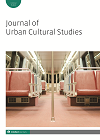
Full text loading...
 , Carmela Cucuzzella2
, Carmela Cucuzzella2
The ubiquity of automobiles has made it so that a considerable amount of space is devoted to them in cities. In the past, urban scholars considered these car-dedicated spaces to be ‘non-places’ that hindered place attachment and social life in cities. This article investigates new place-making efforts in these spaces by examining the documentary film Life on Wheels that offers alternatives. Within the ‘new mobility paradigm’, social space is considered an assemblage of social interactions, objects (e.g. technologies), geographical locations, emplacements and communication networks. Through the analysis of the film, this article investigates the social opportunities and challenges that driverless cars may bring to the urban space. More specifically, in this article, the film shows that the technoscape of driverless cars can direct the city towards a shift in socio-spatial urban design and planning. A profound analytical reading illuminates the need for further social development of this technology. While the technoscape of driverless cars in the current state is in its infancy, its produced social space is yet to be scrutinized; However, at this stage of technology development, the film shows that the driverless environment can help us work towards a new way of understanding mobility spaces and their socio-technological characteristics. This article identifies the social urbanism in car-dedicated spaces projected in films and how this social urbanism can be attainable via new technologies or a transformational shift in mobility.

Article metrics loading...

Full text loading...
References


Data & Media loading...

Publication Date:
https://doi.org/10.1386/jucs_00071_1 Published content will be available immediately after check-out or when it is released in case of a pre-order. Please make sure to be logged in to see all available purchase options.